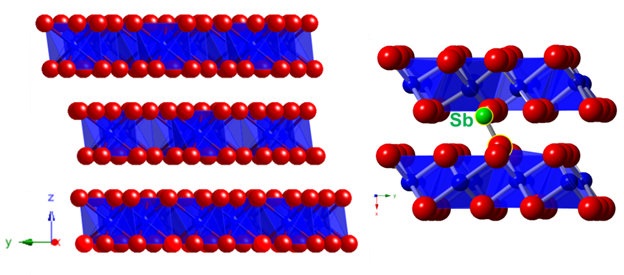Gamma-ray Semiconductor Detectors & Scintillators
BiI3 is a wide band-gap semiconductor material that may be able to operate at room temperature without any necessary cooling mechanism. Because of its high effective atomic number (ZBi=83, ZI=53) and density (5.78 g/cm3), as well as its wide band gap (1.67 eV), BiI3 has strong potential for serving as a radiation sensor in detectors that can operate at ambient temperatures.. Identifying and understanding structural disorder in semiconductor single crystals is crucial to improving their active volume and electronic properties. Because spectral resolution in radiation sensors depends on the electronic response from the crystal, they must be capable of being grown in large, pristine yields. Unfortunately, to date, quality issues continue to hold back the application of semiconductor crystals in high resolution portable detectors. In many cases, including the well-developed material CdZnTe (CZT), in even the highest quality crystals precipitates and secondary phases from stoichiometry related defects significantly degrade the material’s performance as a detector. Recently, lower leakage current (10-2 µA/cm2) and improved resistivity (up to 2.63 x 109 Ω∙cm) in single crystals of the semiconductor BiI3 has been achieved by incorporating Sb as an engineered dopant to mitigate vacancy formation on the iodine site.


Single crystals of BiI3 are grown by the modified vertical Bridgman method. Ultra pure BiI3 powder is synthesized through physical vapor transport method to reduce the impurity level of the starting powder. In order to improve detector characteristics, defect characterization is also being investigated to increase dark resistivity. The ultrapure BiI3 crystals are then used to fabricate gamma-ray detectors, which are subjected to various measurements to characterize their electrical properties and radiation response. The anticipated outcome of this project is a novel wide band-gap semiconductor material that can function as a high efficiency gamma-ray spectrometer without any necessary cryogenic or mechanical cooling. In addition, the project may also result in a gamma-ray spectrometer with better energy resolution than other current state-of-the-art compound semiconductor or scintillator materials. This work could have a significant impact on national security capabilities by improving handheld, portable gamma-ray detectors for weapons of mass destruction detection. In addition, this project could have a significant impact in other fields where improved radiation sensors are necessary, including astronomy and astrophysics, environmental monitoring, and nuclear waste assessment.